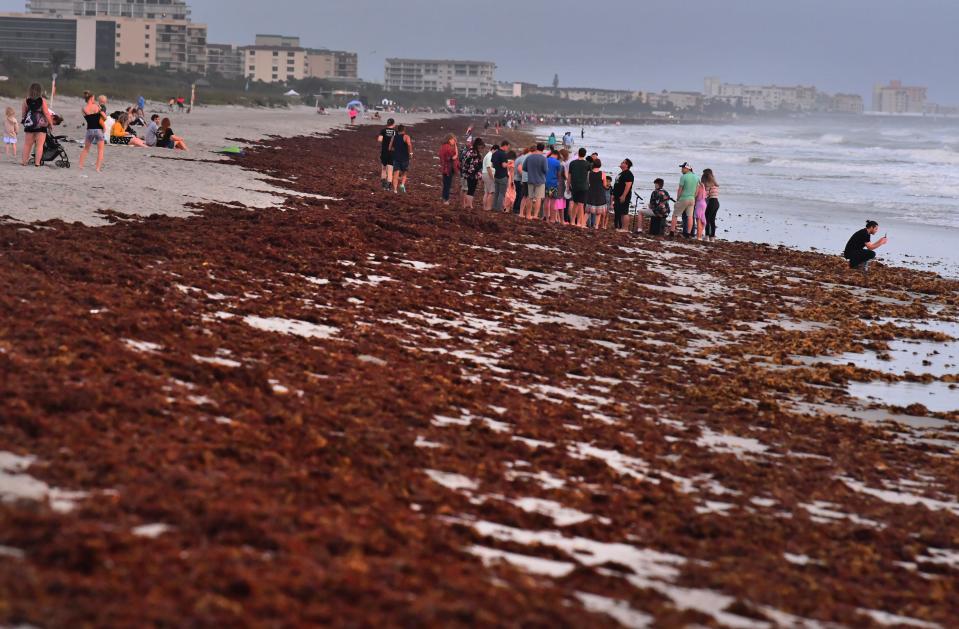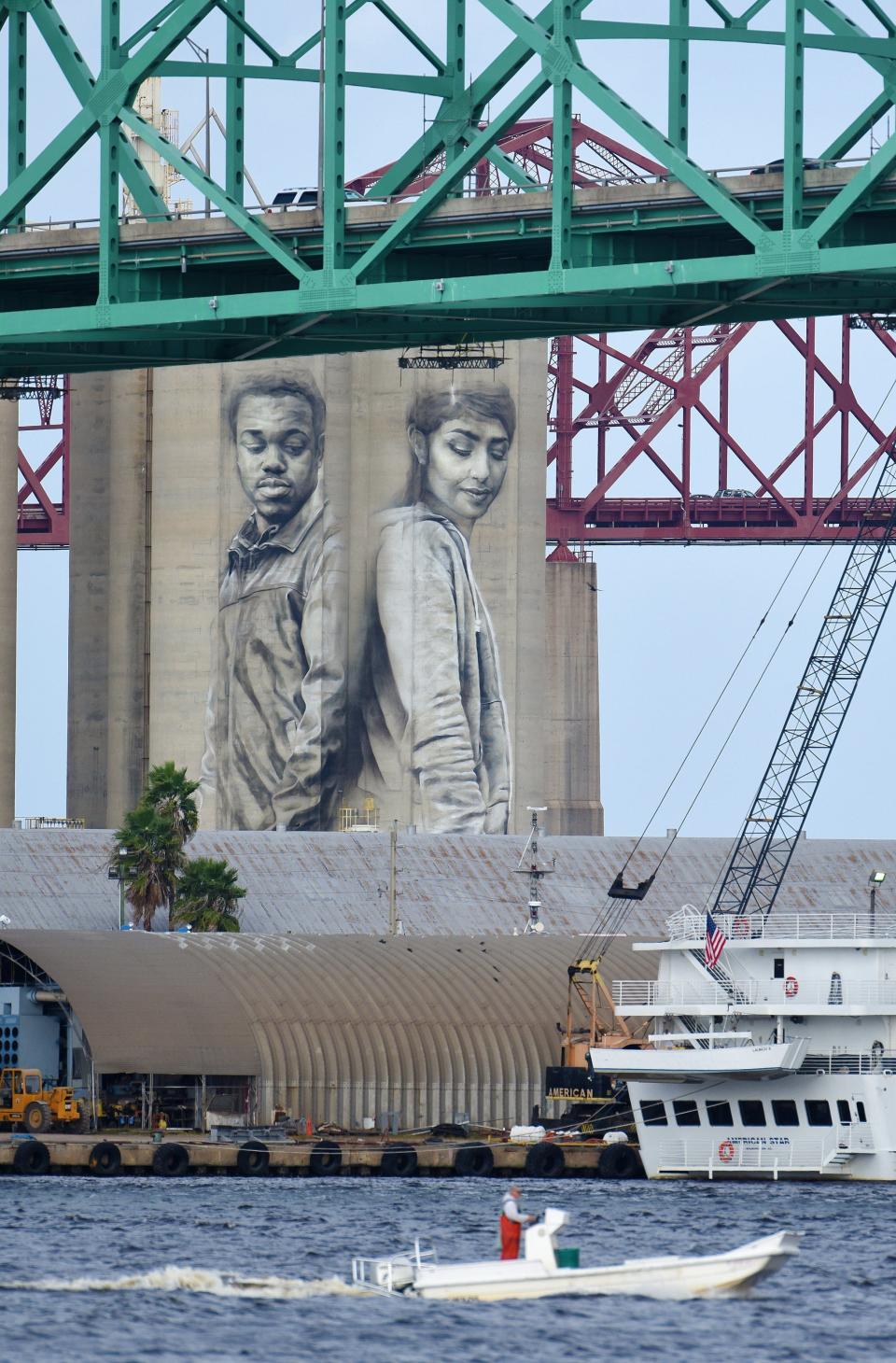Sargassum aside, this seaweed is nothing to scoff at. Here's what we know about it.
- Oops!Something went wrong.Please try again later.
Sargassum is an amazing brown algae that has fascinated marine scientists for decades. It is in the news today because of a massive bloom occurring in the Caribbean Sea. Sargassum normally grows in the crystal blue waters of the Sargasso Sea which is a giant 2 million-square-nautical-mile area contained within the rotating oceanic currents of the North Atlantic Subtropical Gyre.
The Sargasso Sea is typically composed of little islands of sargassum that allow a very diverse ecosystem to exist. The algae floats on the surface, aided by small round sacs filled with gas. It offers food, hiding spots and breeding grounds for a vast array of crabs, shrimp and other invertebrates and over a hundred species of fish. These mats create spawning opportunities for European and American eels and is the habitat for numerous threatened and endangered species including sea turtles.
Sargassum is amazing when you can collect it, floating on the surface and can grab a bucket full to examine. You can spend hours looking at the collection of critters that it contains. Many have evolved to look like sargassum where their body shape resembles the brown algae. It is not harmful or toxic, except it can be sort of uncomfortable if swimming in it.
The latest: Giant mats of seaweed lurk off Florida's coast and have beached in spurts but will peak soon
Sargassum algae: Seaweed clump nearly double the width of U.S. floating at sea. Will it impact Florida?
Beach and ocean photos: Have a look at Sargassum seaweed
In recent years, large quantities of sargassum have formed what is now being called the Great Atlantic Sargassum Belt. It is visible by satellites from space and is now about 5,000 miles long and 300 miles wide. While referred to as a “blob,” it is actually not continuous, but a scattering of sargassum over the surface. The first time that large aggregations of sargassum were detected from space was 2011 and prior to this year, 2018 was the largest bloom.
This year the amount of algae is overwhelming. The satellite images show a huge area along the southern Caribbean Sea. And while it can be a nuisance for boaters in the water, the real trouble comes when it washes ashore. It does not uniformly cover beaches when it washes up. Some areas can be relatively clear, or only mildly affected. Others are almost totally covered with an enormous blanket of algae. When Sargassum decays, it stinks to put it mildly. Rotten egg, smelly, stink. And clearing the beaches can be expensive.

Sargassum is at the mercy of the tides, waves, wind and currents. It has appeared on many of the Caribbean island beaches and is starting to appear on Florida beaches now. It is difficult to predict when and where it will wash ashore. We might see a lot this summer, or we may not see much at all. Recent reports of sizable deposits along the beaches south of Melbourne, with some now being seen in the St. Augustine area.
How do we explain the sudden increase in this floating seaweed? We know that climate change is warming ocean waters, and Sargassum grows faster in warmer water. We also know that there has been an increase in nutrients in the ocean too. Over the last few decades, there has been a dramatic amount of deforestation with an increase in agricultural activity in the Brazilian Amazon rainforest. That nutrient-rich water from the Amazon River flows into the Caribbean Sea.
If that sounds familiar, look no further than our own St. Johns River and Indian River Lagoon. Increased nutrients led to algae blooms here too. So the same thing is now happening on a global scale in the ocean. Just a different species.

Glad you asked River Life
Who are the people painted in the mural on the towers on the St. Johns River that you see from the Hart Bridge?
That is the “Unity” mural that was painted by Australian artist Guido van Helten over four and a half days in 2016. He featured local human rights activists Connell Crooms and Sara Mahmoud. The towers are 150 feet high and are cement silos.
River Life runs the first Tuesday of each month in The Times-Union. Email Quinton White, executive director of Jacksonville University’s Marine Science Research Institute, with questions about our waterways at qwhite@ju.edu. For more on the MSRI, visit ju.edu/msri.
This article originally appeared on Florida Times-Union: Sargassum algae seawood is appearing in Jacksonville-area beaches

